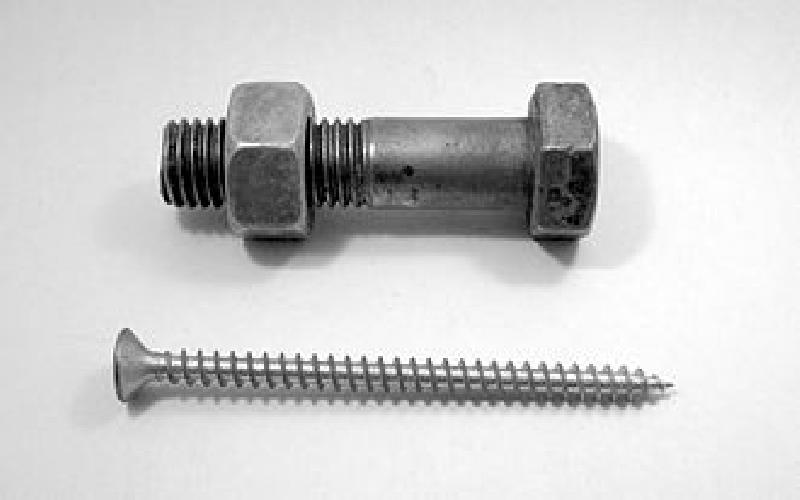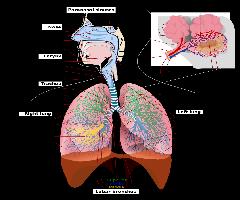Throughout the centuries, people have challenged to make their lives easier. One way to accomplish this was to invent tools that make jobs less difficult. We know these tools as machines. The tools most of us think about when we hear the word "machine" are actually a combination of two or more simple machines. We use simple machines everyday. We are dependent on simple machines in many aspects of our lives. You need a bottle opener to open a soft drink bottle. A carpenter needs a hammer to separate two boards that have been nailed together incorrectly. A furniture mover
needs to use a ramp to bring up heavy cabinet into the back of a truck.Simple machines can include common tools like knives, tweezers, scissors, ice tongs and door handles. On the other hand, they can be part of complex devices like cars and airplanes. These simple machines are practically a part of every device you can think of. Without these machines, we would all still be living in caves. So what makes a simple machine so special?
Simple machines, as their name implies, are simple. In other words, they are the basic parts of machines. A machine can, therefore, be composed of two or more of these simple machines. A hand drill, for example, is a combination of a wheel and axle and a screw. More complex machines such as bicycles can contain many simple machines. The wheels of the bicycle are examples of wheel and axle. The bicycle pedal and gear is also a kind of wheel and axle. Gears and chains are combination of wheel and axle and wedge. Brake handles are kinds of levers. The brakes employ a system using pulleys. The parts of the bicycle are put together by screws.
Machines can help us in four ways.
1. All machines can transfer a force from one place to another.
2. Some machines can increase the amount of a force so that we can lift heavier objects or exert greater force with the machine than we could without it.
3. Some machines can change the direction of a force so that we can make objects move in different directions.
4. Some machines can increase the distance and speed of a force so that we can move things fathers and faster.
No machine can increase both force and distance at the same time. There is a gain in force if a smaller force is needed to lift or move object. But this heavy object will more or is lifted though a shorter distance. And so, even if there is a gain in force, there is a loss in distance. Machines help make work easier but machines do not save work. Machines enable people to do work with less muscular effort and with greater speed.
Two types of works are involved
in using a machine. One of these is the work that goes into the machine, which is called work input . It comes from the force that is applied to the machine, or the effort force . You put work into the machine that you use as you exert effort over some distance. The machine does work too. It exerts a force, called an output force , over some distance. The work dome by the machine is called work output . The work output is used to overcome the force you and the machine are working against.Machines do not increase the work you put into them. The work that comes out of a machine can never be greater than the work that goes into it. In reality, the work output is always less than the work input. This is because friction is always involved in the operation of any machine. Friction is the force that acts in the opposite direction of motion and can cause an object to slow down and finally stop. Some of the work the machine does is used to overcome friction. Comparing the work output to work input will help you determine the efficiency of a machine. The closer the work output is to the work input, the more efficient the machine. Efficiency is expressed as a percentage and it can never be greater than 100%. In fact, many attempts have been made to create a perpetual motion machine (a machine which is 100% efficient), but so far this has proved impossible.
There are just six simple machines. They are the lever, wheel and axle, pulley, inclined plane, wedge and screw . Actually, the wheel and axle and the pulley are different forms of lever, and the wedge and the screw are different forms of the inclined plane.
All machines, no matter how many parts they have, are made up of one or more simple machines. Hence, they are called compound machines . Cars, bicycles and watches are some examples of compound machines. Most of machines we use everyday are compound machines. Compound machines make doing work easier and more enjoyable but remember that, as with simple machines, they cannot multiply work. The amount of work we get out of a machine can be no more than the amount of work you put into it.
Machines would soon stop working without lubrication. The "father of lubrication" is Elijah McCoy , an African-American engineer. He designed a continuous drip lubrication process so that there would be no need to shut down large machinery just so it could be thoroughly lubricated.
note: originally posted at Exposeknowledge.com under the same author.




